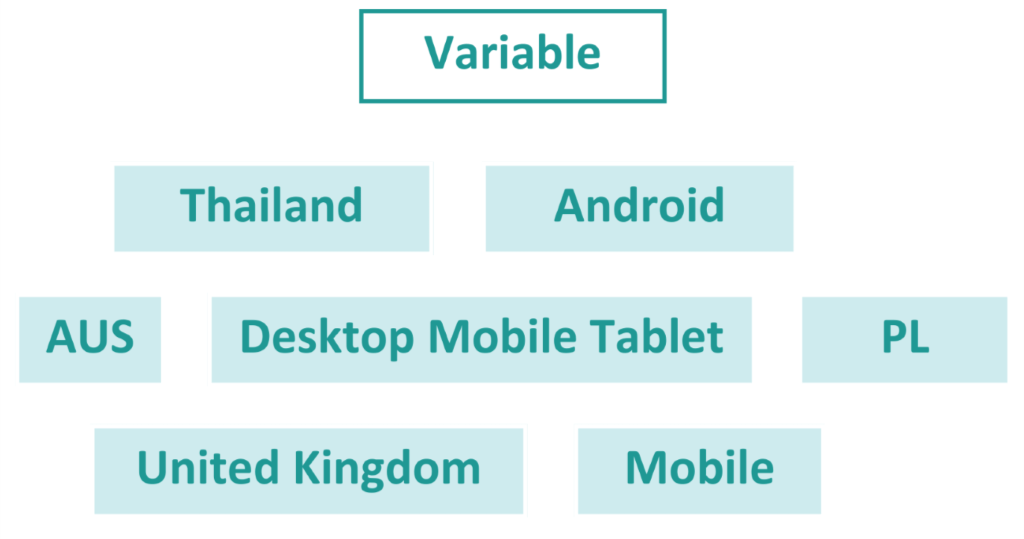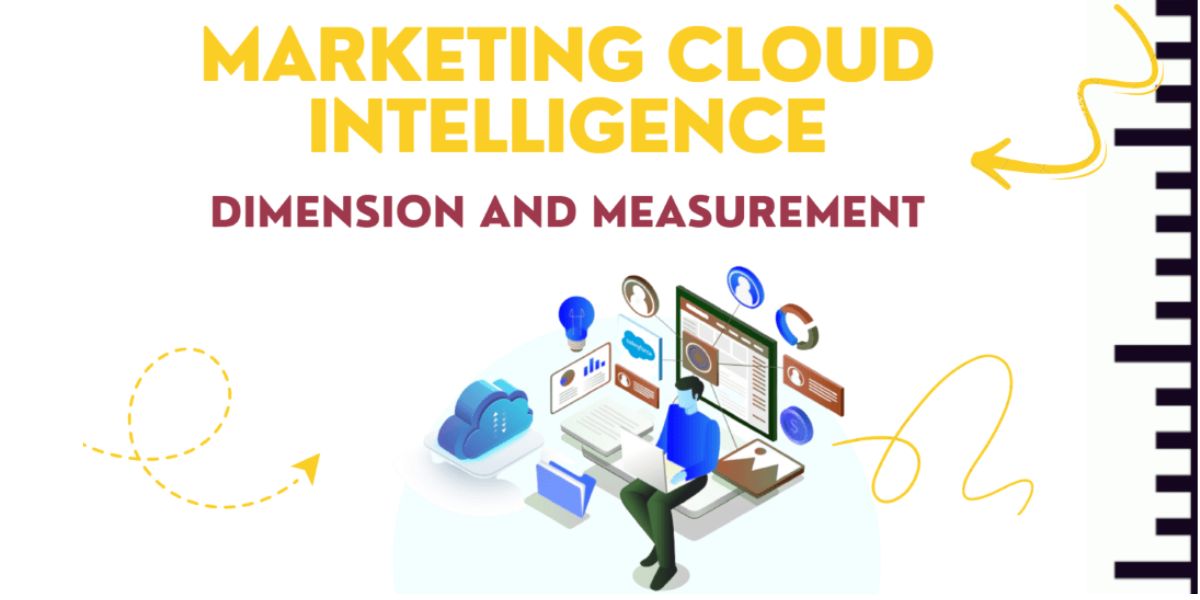Measurement and Dimension Roles in the Marketing Cloud
To apply the data model, you need to categorize it into measurements and dimensions and then into types of dimensions.

Dimensions and Measurements
The first set to categorizing data is to differentiate between the measurement and dimension. Data sources can contain a mix of numerical data or measurements and non-numerical data are known as dimensions.

The measurements are quantitative, and the dimensions are qualitative.
Measurements are simply numbering whose purpose is to count or quantify given dimension values. For example, impressions, clicks, and conversions are data measurements.
Dimensions are usually textual, descriptions, or characteristics of a given field.
Examples include campaign name, site name, and creative type.
Note:- Sometimes dimensions can contain numbers.
Measurement and Dimensions are combined features for viewing Dashboards, Pivot Tables, and reports.
Dimensions
A dimension in Marketing Cloud Intelligence is a qualitative, non-numerical property that offers details about your dataset, such as the name and ID of your campaigns. Even though a dimension contains a number, it cannot be counted. Dimensions can be textual values.
For example, Name, categories geographical data, or numerical values that are not aggregated such as an ID number, a telephone number, or a date.

There are five types of dimensions which are divided into two groups:

A. Entity Dimensions
Let’s discuss with the first group Entity Dimensions. We have 3 types of entity dimensions: Entity Key, Entity Name, Entity Attribute.

1. Entity Key: Each entity has a unique identifier that represents a specific entity and no other.
2. Entity Name: This is the leading way to describe the entity but doesn’t have to be unique.
3. Entity Attribute: That entity has an additional way to describe these entities, they are called entity attributes.
For example: Assume an Entity is a person.

The entity key would be that person’s Id number which identifies that person.
A person’s full name would be their main attribute not necessarily unique but generally more specific.
There are lots of people in the world who are named XYZ that person’s birthdate, gender, eye color, weight and height and more would be their attributes.
A person cannot have more than one weight at a time, nor can they have more than one height or eye color at a time.
Similarly, the same thing would apply to masterclass media buy:

The unique identifier for this media buys or media buys key (Id Number) MB46ABC.
In this Id card, additional details are the attributes:
- The primary attribute is the Media Buy Name: JAMES PATTERSON TECHES WRITING Masterclass 2020 – NYT.
- There are two additional attribute fields which are:
- Media Buy Size: Banner
- Media Buy Targeting Type: Direct
B. General Dimensions
Let’s discuss with the second group General Dimensions.
In General Dimension, we have two types of dimensions: Date and Variable.

1. Date: The date dimension is a very special dimension as it is necessary for data aggregation.
Any numerical data uploaded into the database must have a date associated with it.
Date uploaded into Datorama come in an ample variety of formats, from text dates, numerical dates, time stamps, and everything in between, we have a few date examples which are used in Datorama:

If the date dimension does not exist or is not legible in your data, you can use mapping formulas to determine it.
NOTE: For more information to understand the mapping formula, refer to the total connect section.
2. Variable: The variable Dimensions are standalone dimensions such as geolocation data or device categories. Much like the date dimension.

But they don’t have a direct relationship with the entities like attributes for ex:
If we go back to the same example of entity person. You can think of the variable as being a food preference.
Since the person could crave pizza and ice create at the same time and many people can crave pizza at any given time then the craving for pizza doesn’t clearly define a group of people because of the different choices.

Similarly, the same creative for the same campaign could be viewed in several different locations around the world and there could be countless creatives for many campaigns viewed.

NOTE: Variables don’t exist in every data set and are not mandatory fields.
Measurements
Measurements are just numbers that are used to count or measure values for a specific dimension value. Dataset metrics include things like impressions, clicks, and conversions.
Measurements in marketing cloud intelligence are quantitative numerical data that can be counted, such as the quantity of clicks and emails opened. KPIs are established and data analysis is done using measurements.
The data model’s measurements and the associated entities are displayed in the Measurement list, which can be accessed via the Connect & Mix tab’s measurement menu option.

A measurement can be a percentage such as a click-through rate a monetary value such as revenue or simply a number such as a click.
There are four different measurement types that are available: currency, number, duration, and percentage.
The aggregation kinds that are readily available are AVG, COUNT, FIRST, LAST, LIFETIME, MAX, MIN, and SUM.
For example: A company ran its campaign, after the completion of the campaign, they wanted to see how many results they got, exported that result in an excel form and got the data related to the campaign, in which there were 2 types of data Dimensions and measurements.
With the help of measurement, they were able to know how much response they got from which social media platform.
So that they can calculate the ROI on impressions, likes, clicks, and reach from the response, which can further increase their revenue.

All the measurements which are calculate or aggregated marked in red mark.
You can choose from the Measurement list:
- The measurement list for export.
- Edit the names, kind, and aggregation of the measurement display.
- In your workstation, swap out a measurement.
- Observe the data streams to which the measurement is mapped.
- View the measurements that are mapped and not mapped.





